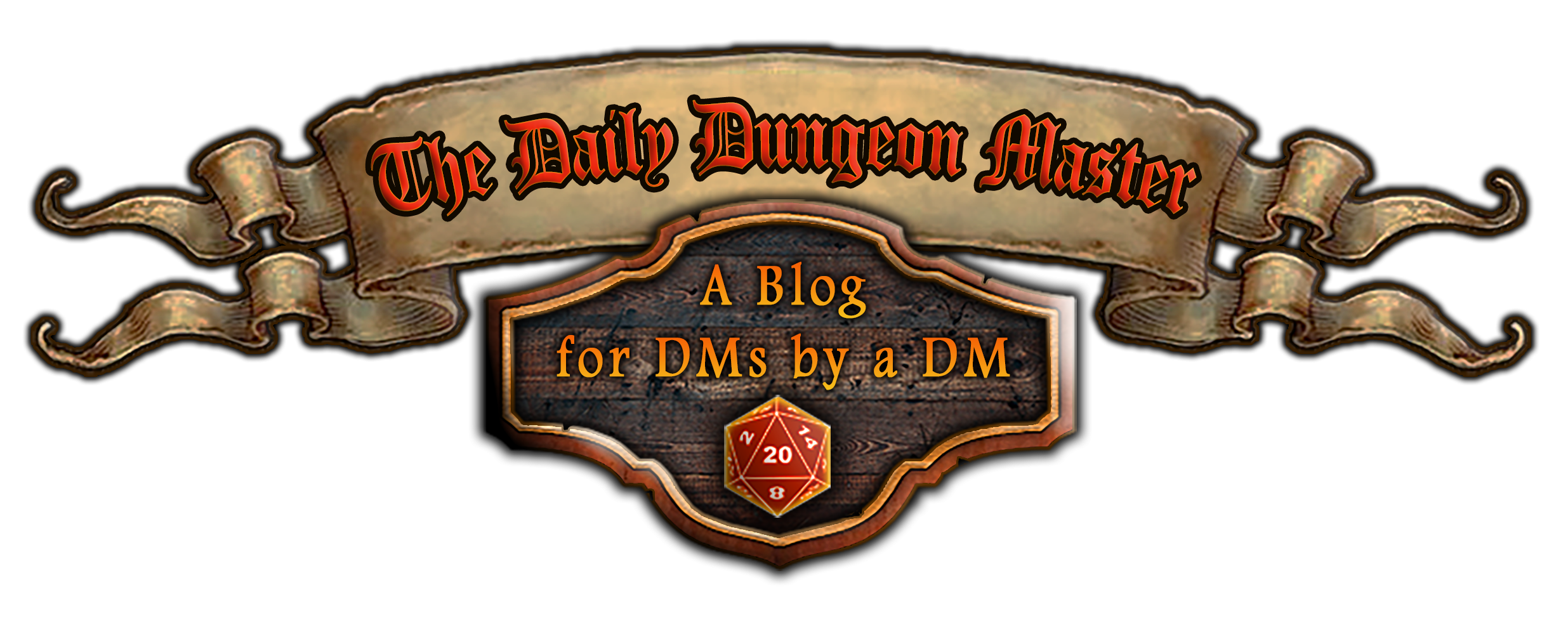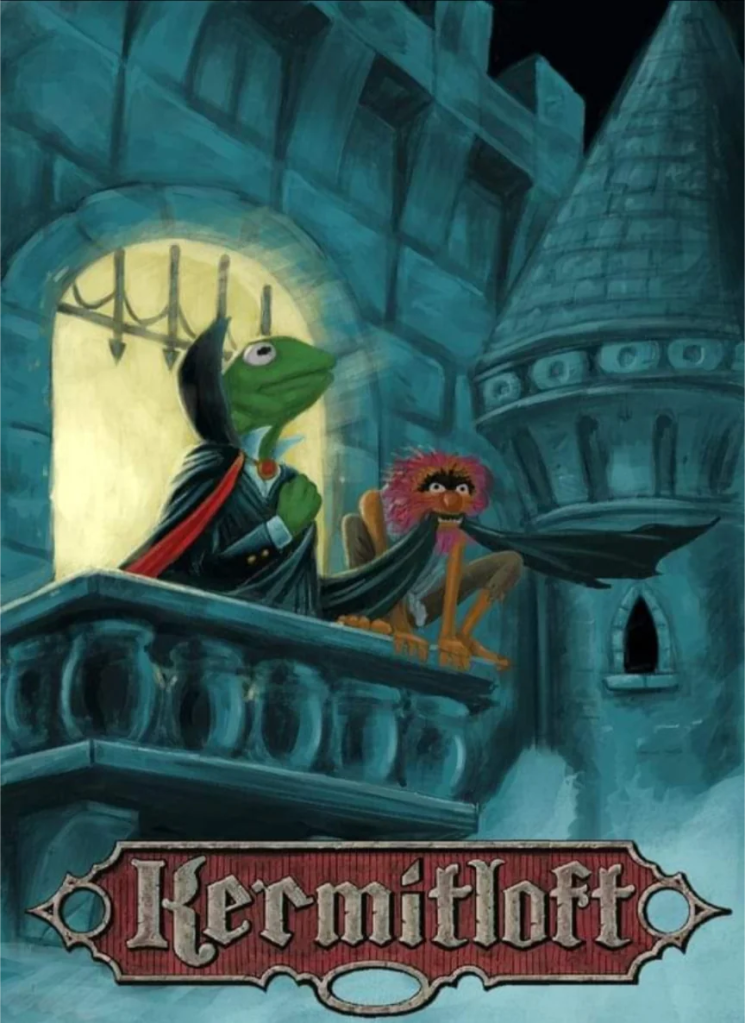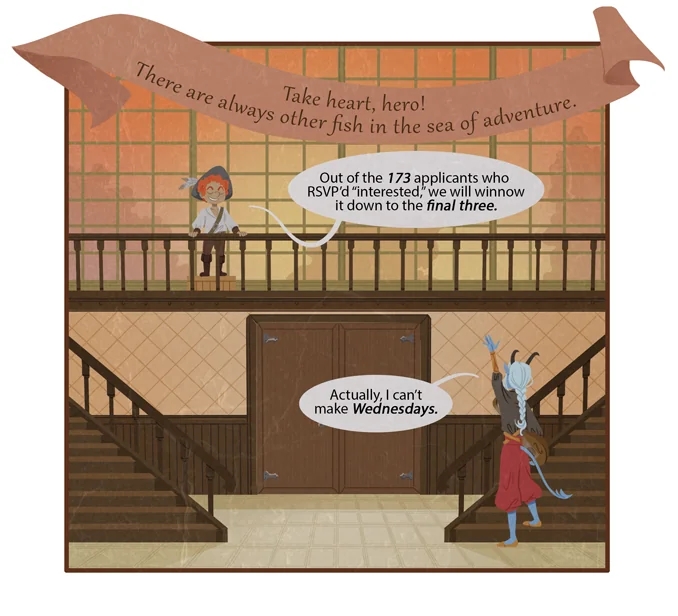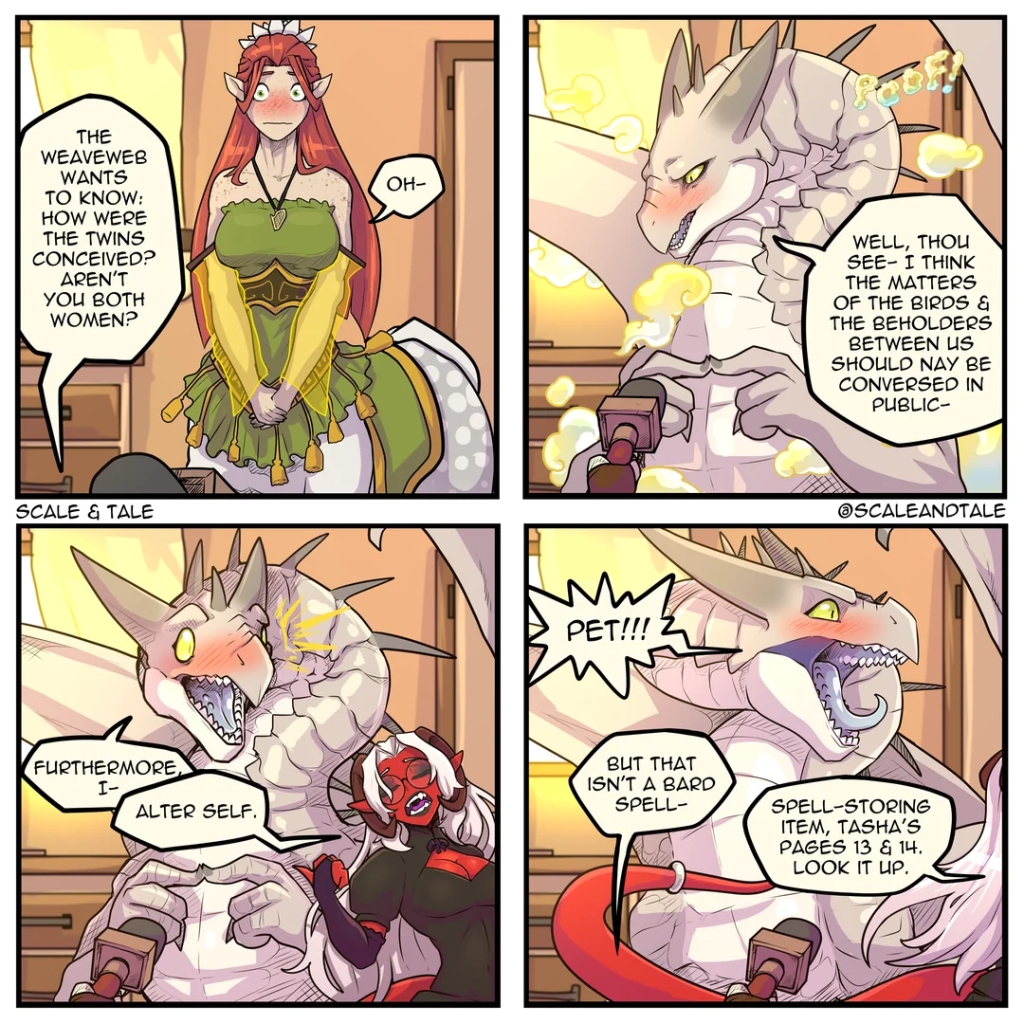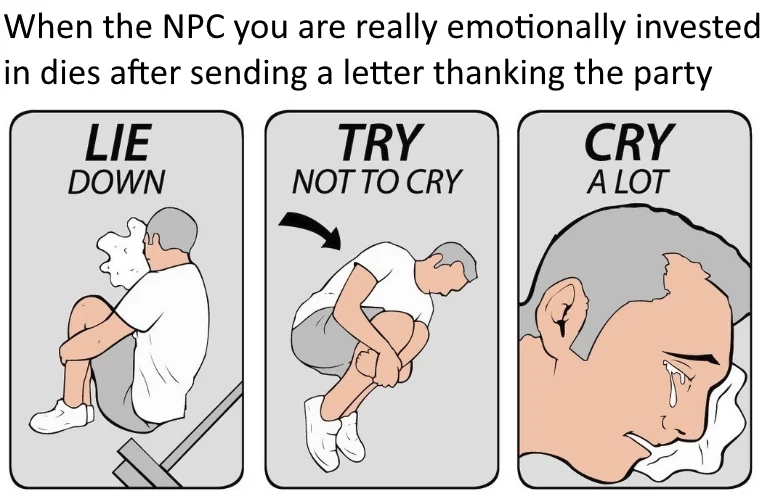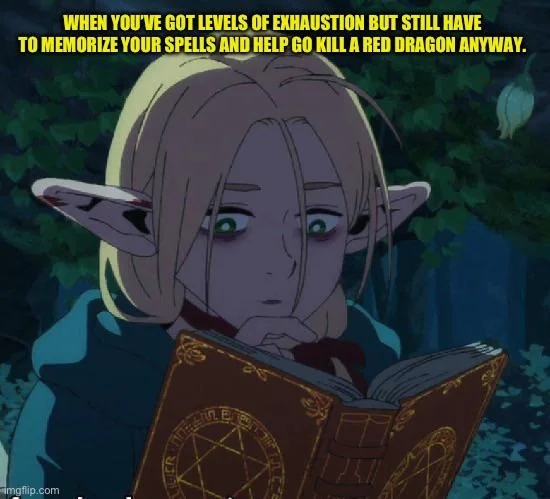Dear Readers, in the vast and wondrous world of Dungeons & Dragons, the possibilities for character creation are limited only by your imagination. While many players are drawn to the iconic classes like fighter, wizard, and rogue, there exists a realm of untapped potential in unconventional character builds—those unique combinations of race, class, and abilities that defy expectations and challenge the status quo. In this blog post, we embark on a journey to explore some of the most unconventional character builds in D&D, from the whimsical to the downright bizarre, and uncover the hidden depths of creativity and ingenuity that lie within. Also, the way I’ve structured the list is by primary class followed by secondary. So the first entry, the Barbarian Bard would be primarily a Barbarian and secondarily a rogue. Some combinations, therefore, will be reverses, but have their own flavor.
- The Barbarian Bard:
At first glance, the barbarian and the bard may seem like polar opposites—the former a savage warrior fueled by rage and primal instincts, the latter a charismatic performer skilled in the arts of music and storytelling. However, when combined, these two classes create a character unlike any other: the barbarian bard, a fearsome warrior-poet whose thunderous battle cries inspire allies and strike fear into the hearts of enemies.
The key to mastering the barbarian bard lies in finding the balance between brute force and finesse, strength and charisma. By harnessing the raw power of their rage and channeling it through the artistry of their music, the barbarian bard can turn the tide of battle with a single chord or a well-timed verse. Whether leading their comrades into battle with an epic ballad or unleashing their fury upon their foes with a mighty war cry, the barbarian bard is a force to be reckoned with on the battlefield and beyond.
- The Paladin Rogue:
In the world of D&D, paladins are often revered as champions of justice and righteousness, sworn to uphold the principles of honor and duty at any cost. Conversely, rogues are seen as cunning and stealthy opportunists, skilled in the arts of deception and subterfuge. But what happens when you combine these two disparate classes into a single character? Enter the paladin rogue, a shadowy crusader whose devotion to the light is matched only by their skill in the art of stealth and subterfuge.
The paladin rogue walks a fine line between law and chaos, good and evil, using their divine powers to smite the wicked and their rogue abilities to outmaneuver and outwit their foes. With a keen eye for weakness and a talent for exploiting it, the paladin rogue strikes fear into the hearts of evildoers everywhere, knowing that justice is not always served in the light of day.
- The Warlock Monk:
The warlock and the monk are two classes with vastly different origins and philosophies—the former drawing power from dark pacts and eldritch patrons, the latter mastering the ancient arts of self-discipline and inner harmony. Yet, when combined, these two classes create a character with a unique blend of martial prowess and otherworldly magic: the warlock monk, a mystical warrior who channels the powers of the cosmos through their body and mind.
The warlock monk’s path to enlightenment is a precarious one, fraught with temptation and peril. By forging pacts with eldritch beings and harnessing their otherworldly power, the warlock monk gains access to a host of magical abilities that complement their martial prowess. Whether conjuring eldritch blasts to smite their enemies from afar or channeling the energies of the cosmos to enhance their physical abilities, the warlock monk is a force to be reckoned with on the battlefield and beyond.
- The Sorcerer Druid:
Sorcerers and druids are both wielders of arcane magic, but their approaches to the mystic arts are as different as night and day. Sorcerers draw their power from within, tapping into the raw energy of their sorcerous bloodline to fuel their spells, while druids draw their power from the natural world, communing with the spirits of the land and the elements. When combined, these two classes create a character with a unique affinity for both the arcane and the natural world: the sorcerer druid, a mage who harnesses the powers of both the elements and the cosmos.
The sorcerer druid’s magic is a reflection of the balance and harmony found in nature, blending the primal forces of earth, air, fire, and water with the cosmic energies of the heavens. By attuning themselves to the rhythms of the natural world and the cycles of the cosmos, the sorcerer druid gains access to a wide range of magical abilities that allow them to shape and manipulate the world around them. Whether summoning storms to cleanse the land or conjuring beasts to aid them in battle, the sorcerer druid is a master of both the arcane and the natural arts.
- The Cleric Warlock:
Clerics are divine servants of the gods, blessed with the power to heal the sick, smite the wicked, and channel the divine will of their deities. Warlocks, on the other hand, are mortal agents who have forged pacts with powerful beings from beyond the mortal realm, trading their souls for arcane power and forbidden knowledge. When combined, these two classes create a character with a unique blend of divine and eldritch power: the cleric warlock, a mystic warrior who serves both the will of their god and the whims of their otherworldly patron.
The cleric warlock’s magic is a reflection of their dual allegiance to both the divine and the infernal, drawing power from the light of their god and the darkness of their patron. By invoking the names of both their deity and their patron, the cleric warlock gains access to a wide range of magical abilities that allow them to heal the wounded and smite the wicked with equal ease. Whether channeling holy energy to banish undead or conjuring infernal flames to incinerate their enemies, the cleric warlock is a formidable force on the battlefield and beyond.
- The Wizard Barbarian:
Wizards are masters of arcane knowledge, scholars who study the secrets of magic and unlock the mysteries of the universe through rigorous study and experimentation. Barbarians, on the other hand, are primal warriors who draw their strength from their raw physical power and their unyielding will to survive. When combined, these two classes create a character with a unique blend of intellect and brute force: the wizard barbarian, a savage sage who wields both spell and steel with equal proficiency.
The wizard barbarian’s magic is a reflection of their wild and untamed nature, drawing power from the primal energies of the natural world and the arcane mysteries of the cosmos. By tapping into the latent energies of their rage and channeling them through their spells, the wizard barbarian gains access to a wide range of magical abilities that allow them to unleash devastating attacks and protect themselves from harm. Whether hurling fireballs to incinerate their enemies or conjuring protective wards to shield themselves from harm, the wizard barbarian is a force to be reckoned with on the battlefield and beyond.
- The Fighter Druid:
Fighters are skilled warriors who excel in combat, honing their skills through years of training and experience on the battlefield. Druids, on the other hand, are mystical guardians of the natural world, attuned to the rhythms of the earth and the spirits of the land. When combined, these two classes create a character with a unique blend of martial prowess and mystical power: the fighter druid, a warrior who draws strength from the earth itself and fights with the fury of the wild.
The fighter druid’s combat style is a dynamic blend of martial techniques and primal magic, combining the discipline of the warrior with the instinctual power of the druid. By channeling the elemental energies of nature through their weapons and armor, the fighter druid gains access to a wide range of abilities that enhance their combat prowess and protect them from harm.
Through their connection to the natural world, the fighter druid can call upon the spirits of the earth to strengthen their attacks, summon creatures to aid them in battle, and manipulate the very elements themselves to turn the tide of combat in their favor. Whether unleashing the fury of a raging storm or commanding the earth to swallow their enemies whole, the fighter druid is a formidable opponent on the battlefield and a stalwart protector of the natural world.
- The Ranger Rogue:
Rangers are skilled hunters and trackers, at home in the wilderness and adept at navigating the untamed wilds. Rogues, on the other hand, are cunning and stealthy opportunists, skilled in the arts of deception and subterfuge. When combined, these two classes create a character with a unique blend of wilderness survival skills and rogueish cunning: the ranger rogue, a master of stealth and ambush who strikes from the shadows with deadly precision.
The ranger rogue’s expertise lies in their ability to blend seamlessly into their surroundings, using their knowledge of the wilderness to gain the upper hand in combat and evade detection from their foes. By combining their ranger abilities with their rogue skills, the ranger rogue becomes a deadly predator, capable of striking swiftly and silently from the shadows before disappearing without a trace.
With their keen senses and their mastery of stealth, the ranger rogue excels at scouting ahead, gathering information, and setting traps for their enemies. Whether picking off targets from a distance with their bow and arrow or launching a surprise attack from the underbrush, the ranger rogue is a silent and deadly threat on the battlefield.
Truth be told, however, I’ve seen this build pretty regularly with a few of my players, combining a Gloomstalker Ranger with an Assassin Rogue. It’s…pretty deadly.
- The Monk Cleric:
Monks are disciplined warriors who have mastered the art of unarmed combat, harnessing their inner strength and spiritual energy to achieve feats of superhuman agility and power. Clerics, on the other hand, are divine servants of the gods, blessed with the power to heal the sick, smite the wicked, and channel the divine will of their deities. When combined, these two classes create a character with a unique blend of martial prowess and divine magic: the monk cleric, a holy warrior who fights with the grace of a dancer and the power of a priest.
The monk cleric’s combat style is a fusion of physicality and spirituality, combining the martial techniques of the monk with the divine magic of the cleric. By channeling their inner ki and tapping into the divine energies of their deity, the monk cleric gains access to a wide range of abilities that enhance their combat abilities and support their allies in battle.
With their mastery of unarmed combat and their connection to the divine, the monk cleric excels at both offense and defense on the battlefield. Whether striking with lightning-fast punches and kicks or channeling holy energy to heal their allies and smite their enemies, the monk cleric is a versatile and formidable combatant in any encounter.
- The Bard Warlock:
Bards are charismatic performers and storytellers, skilled in the arts of music, magic, and manipulation. Warlocks, on the other hand, are mortal agents who have forged pacts with powerful beings from beyond the mortal realm, trading their souls for arcane power and forbidden knowledge. When combined, these two classes create a character with a unique blend of charm and eldritch power: the bard warlock, a master of manipulation who uses their charisma and cunning to bend others to their will.
The bard warlock’s magic is a reflection of their mastery of both music and the arcane, blending the enchanting melodies of the bard with the dark and mysterious powers of the warlock. By weaving spellsong and invocation together, the bard warlock gains access to a wide range of abilities that allow them to mesmerize their enemies, inspire their allies, and shape the very fabric of reality to suit their whims.
With their silver tongue and their eldritch powers, the bard warlock excels at both charm and manipulation, using their charisma and cunning to deceive, seduce, and intimidate their foes. Whether beguiling their enemies with honeyed words or blasting them with eldritch energy, the bard warlock is a master of persuasion and manipulation in any social encounter or battle.
- The Druid Sorcerer:
Druids are mystical guardians of the natural world, attuned to the rhythms of the earth and the spirits of the land. Sorcerers, on the other hand, are wielders of arcane magic, drawing power from their sorcerous bloodline to fuel their spells. When combined, these two classes create a character with a unique blend of primal power and arcane magic: the druid sorcerer, a mage who channels the elemental forces of nature through their sorcerous bloodline.
The druid sorcerer’s magic is a reflection of their deep connection to the natural world and their innate sorcerous abilities, blending the primal energies of earth, air, fire, and water with the arcane mysteries of the cosmos. By attuning themselves to the forces of nature and the elements, the druid sorcerer gains access to a wide range of magical abilities that allow them to shape and manipulate the world around them.
With their mastery of both primal magic and arcane sorcery, the druid sorcerer excels at both offense and defense on the battlefield. Whether summoning storms to cleanse the land or hurling bolts of lightning to smite their enemies, the druid sorcerer is a formidable force in any encounter, harnessing the power of nature and the cosmos to achieve their goals.
- The Rogue Fighter:
Rogues are skilled opportunists and stealthy assassins, adept at slipping past defenses and striking from the shadows. Fighters, on the other hand, are disciplined warriors who excel in combat, honing their skills through years of training and experience on the battlefield. When combined, these two classes create a character with a unique blend of cunning and combat prowess: the rogue fighter, a master of stealth and strategy who fights with the skill of a trained warrior and the guile of a seasoned rogue.
The rogue fighter’s combat style is a fusion of finesse and brute force, combining the precision strikes of the rogue with the raw power of the fighter. By combining their rogue abilities with their fighter skills, the rogue fighter gains access to a wide range of abilities that allow them to outmaneuver their enemies, exploit their weaknesses, and strike with deadly precision.
With their mastery of stealth and their skill in combat, the rogue fighter excels at both reconnaissance and assassination, using their cunning and guile to outsmart their foes and strike from the shadows. Whether picking off targets from a distance with their bow and arrow or launching a surprise attack from the darkness, the rogue fighter is a deadly threat on the battlefield.
- The Sorcerer Paladin:
Sorcerers are wielders of arcane magic, drawing power from their sorcerous bloodline to fuel their spells. Paladins, on the other hand, are divine champions of justice and righteousness, sworn to uphold the principles of honor and duty at any cost. When combined, these two classes create a character with a unique blend of arcane power and divine magic: the sorcerer paladin, a holy mage who wields the power of the cosmos with the righteousness of a paladin.
The sorcerer paladin’s magic is a reflection of their deep connection to both the arcane and the divine, blending the raw energy of their sorcerous bloodline with the divine power of their oath. By harnessing the cosmic forces of magic and the radiant energies of their deity, the sorcerer paladin gains access to a wide range of magical abilities that allow them to smite the wicked and protect the innocent.
With their mastery of both arcane and divine magic, the sorcerer paladin excels at both offense and defense on the battlefield. Whether raining down bolts of lightning to incinerate their enemies or channeling holy energy to heal their allies and bolster their defenses, the sorcerer paladin is a formidable force in any encounter, using their magic to uphold the principles of justice and righteousness.
- The Barbarian Druid:
Barbarians are savage warriors who draw their strength from their raw physical power and their unyielding will to survive. Druids, on the other hand, are mystical guardians of the natural world, attuned to the rhythms of the earth and the spirits of the land. When combined, these two classes create a character with a unique blend of primal power and elemental magic: the barbarian druid, a warrior who channels the fury of the wild through their own body and mind.
The barbarian druid’s combat style is a fusion of brute force and primal magic, combining the savage strength of the barbarian with the elemental powers of the druid. By tapping into the primal energies of nature and the elements, the barbarian druid gains access to a wide range of abilities that enhance their combat abilities and protect them from harm.
With their mastery of both physical and mystical combat, the barbarian druid excels at both offense and defense on the battlefield. Whether unleashing the fury of a raging storm or transforming into a mighty beast to tear their enemies apart, the barbarian druid is a force to be reckoned with in any encounter, using their primal powers to overcome any obstacle in their path.
- The Cleric Bard:
Clerics are divine servants of the gods, blessed with the power to heal the sick, smite the wicked, and channel the divine will of their deities. Bards, on the other hand, are charismatic performers and storytellers, skilled in the arts of music, magic, and manipulation. When combined, these two classes create a character with a unique blend of divine magic and musical talent: the cleric bard, a holy troubadour who spreads the word of their deity through song and story.
The cleric bard’s magic is a reflection of their dual talents as both a healer and a performer, blending the divine power of the cleric with the enchanting melodies of the bard. By channeling the power of their deity through their music, the cleric bard gains access to a wide range of abilities that allow them to inspire their allies, heal the wounded, and smite the wicked with the righteous fury of their god.
With their mastery of both divine magic and musical performance, the cleric bard excels at both support and offense on the battlefield. Whether rallying their allies with stirring ballads or blasting their enemies with holy energy, the cleric bard is a versatile and formidable combatant in any encounter, using their music to uplift the spirits of their allies and strike fear into the hearts of their foes.
- The Warlock Ranger:
Warlocks are mortal agents who have forged pacts with powerful beings from beyond the mortal realm, trading their souls for arcane power and forbidden knowledge. Rangers, on the other hand, are skilled hunters and trackers, at home in the wilderness and adept at navigating the untamed wilds. When combined, these two classes create a character with a unique blend of eldritch power and wilderness survival skills: the warlock ranger, a master of both arcane magic and woodland lore.
The warlock ranger’s magic is a reflection of their connection to both the arcane and the natural world, blending the eldritch powers of the warlock with the primal energies of the ranger. By forging pacts with otherworldly beings and communing with the spirits of the wild, the warlock ranger gains access to a wide range of abilities that allow them to navigate the wilderness with ease, summon creatures to aid them in battle, and unleash devastating spells on their enemies.
With their mastery of both arcane magic and wilderness survival skills, the warlock ranger excels at both exploration and combat in the untamed wilds. Whether tracking their quarry through the forest with uncanny precision or unleashing blasts of eldritch energy to annihilate their enemies, the warlock ranger is a formidable force in any wilderness encounter, using their magic and their wits to overcome any obstacle in their path.
- The Monk Wizard:
Monks are disciplined warriors who have mastered the art of unarmed combat, harnessing their inner strength and spiritual energy to achieve feats of superhuman agility and power. Wizards, on the other hand, are masters of arcane knowledge, scholars who study the secrets of magic and unlock the mysteries of the universe through rigorous study and experimentation. When combined, these two classes create a character with a unique blend of martial prowess and arcane magic: the monk wizard, a mystical warrior who channels the power of the cosmos through their body and mind.
The monk wizard’s magic is a reflection of their deep spiritual connection and their profound understanding of the arcane. By blending the physical techniques of the monk with the arcane knowledge of the wizard, the monk wizard gains access to a wide range of abilities that allow them to unleash devastating spells and perform incredible feats of martial prowess.
With their mastery of both martial arts and arcane magic, the monk wizard excels at both offense and defense on the battlefield. Whether striking with lightning-fast punches and kicks or hurling bolts of energy to incinerate their enemies, the monk wizard is a formidable force in any encounter, using their magic and their martial skills to achieve victory.
- The Ranger Sorcerer:
Rangers are skilled hunters and trackers, at home in the wilderness and adept at navigating the untamed wilds. Sorcerers, on the other hand, are wielders of arcane magic, drawing power from their sorcerous bloodline to fuel their spells. When combined, these two classes create a character with a unique blend of wilderness survival skills and arcane magic: the ranger sorcerer, a master of both nature and the arcane who harnesses the power of the elements to aid them in their quests.
The ranger sorcerer’s magic is a reflection of their deep connection to the natural world and their innate sorcerous abilities, blending the primal energies of the wilderness with the raw power of their sorcerous bloodline. By channeling the elemental forces of nature through their arcane spells, the ranger sorcerer gains access to a wide range of abilities that allow them to navigate the wilderness with ease and unleash devastating spells on their enemies.
With their mastery of both wilderness survival skills and arcane magic, the ranger sorcerer excels at both exploration and combat in the untamed wilds. Whether tracking their quarry through the forest with uncanny precision or summoning storms to cleanse the land of their enemies, the ranger sorcerer is a formidable force in any wilderness encounter, using their magic and their skills to overcome any obstacle in their path.
- The Druid Barbarian:
Druids are mystical guardians of the natural world, attuned to the rhythms of the earth and the spirits of the land. Barbarians, on the other hand, are savage warriors who draw their strength from their raw physical power and their unyielding will to survive. When combined, these two classes create a character with a unique blend of primal power and elemental magic: the druid barbarian, a warrior who channels the fury of the wild through their own body and mind.
The druid barbarian’s combat style is a fusion of brute force and primal magic, combining the savage strength of the barbarian with the elemental powers of the druid. By tapping into the primal energies of nature and the elements, the druid barbarian gains access to a wide range of abilities that enhance their combat abilities and protect them from harm.
With their mastery of both physical combat and elemental magic, the druid barbarian excels at both offense and defense on the battlefield. Whether transforming into a mighty beast to tear their enemies apart or summoning storms to cleanse the land of their foes, the druid barbarian is a force to be reckoned with in any encounter, using their primal powers to overcome any obstacle in their path.
I’ve seen this build in my Sunday night game, and it was used to great effect, especially considering the fact that he was a goliath.
- The Rogue Monk:
Rogues are skilled opportunists and stealthy assassins, adept at slipping past defenses and striking from the shadows. Monks, on the other hand, are disciplined warriors who have mastered the art of unarmed combat, harnessing their inner strength and spiritual energy to achieve feats of superhuman agility and power. When combined, these two classes create a character with a unique blend of stealth and martial prowess: the rogue monk, a master of both subtlety and combat who strikes with deadly precision from the shadows.
The rogue monk’s combat style is a fusion of finesse and brute force, combining the stealthy techniques of the rogue with the disciplined martial arts of the monk. By blending the agility of the rogue with the strength and speed of the monk, the rogue monk gains access to a wide range of abilities that allow them to outmaneuver their enemies and strike with deadly precision.
With their mastery of both stealth and martial arts, the rogue monk excels at both reconnaissance and combat on the battlefield. Whether slipping past enemy defenses to deliver a deadly strike or unleashing a flurry of blows to incapacitate their foes, the rogue monk is a silent and deadly threat in any encounter, using their skills to achieve victory through cunning and precision.
In conclusion, the world of D&D is filled with endless possibilities for character creation. By exploring unconventional class combinations like the ones discussed in this blog post, players can unlock new depths of creativity and challenge themselves to think outside the box. Whether you’re a barbarian bard, a sorcerer paladin, or a ranger sorcerer, the only limit to your character’s potential is your own imagination.
Until next time, Dear Readers…
